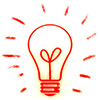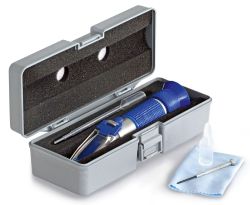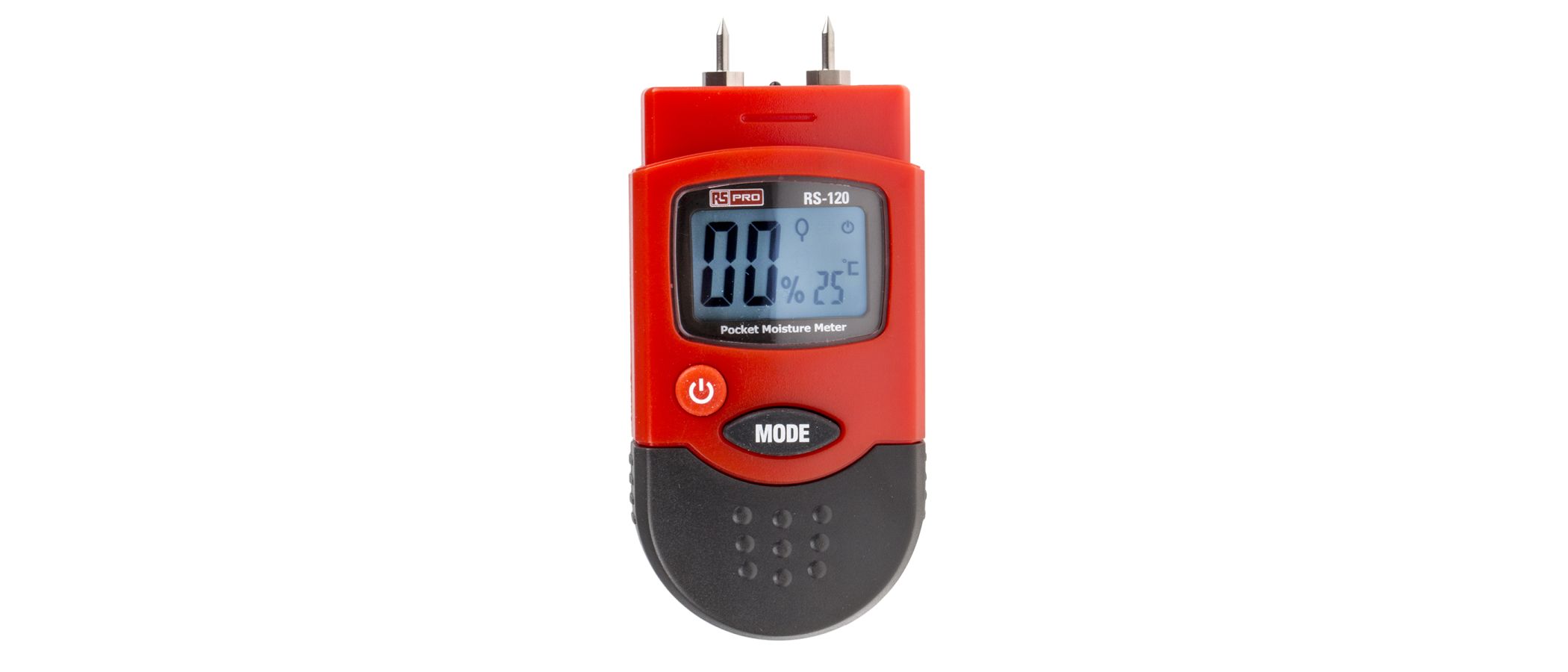A Complete Guide to Refractometers
Our refractometers guide explains what they are, their uses, how they work, the key types, and how to use them.

What is a Refractometer?
Refractometers are specialist environmental test and measurement devices used to measure the angle of refraction - the extent to which light changes direction when passing through a translucent substance such as an aqueous solution. Refractometry is a widely used technology because this angle can be used to accurately assess the concentration of any soluble substances present within a multitude of liquids.
What is a Refractometer Used for?
Thanks to their analytical capabilities, refractometers are widely used in several industries:
-
In food production, to measure the salinity of sauces and marinades, and the sugar content of fruit juice, soda, jams, and marmalades
-
In agriculture
-
In brewing, to assess the progress of fermentation or the sugar and alcohol content of beer and wine
-
In beekeeping, to ensure that the honey contains the right levels of nutrients and water to meet quality standards
-
In chemical production and manufacturing
-
In industry, for the preparation of ethylene glycol (antifreeze) and in mixing water-based cutting fluids (coolants and lubricants used with metalworking equipment)
-
In human and veterinary medicine, to analyse urine for diagnosis
-
To assess the salinity of aquaria, fish tanks and seawater
-
In automotive engineering
What Does a Refractometer Measure?
Refractometers measure the extent to which a beam of light bends when it passes through a transparent substance such as a liquid. This can be used to identify the liquid and assess its purity and the concentration of any substances which have been added.

How Does a Refractometer Work?
Refractometers detect refraction when light passes through a liquid, a transparent substance, or a gas - in other words, the extent to which light refracts or bends. This bending is caused by the passage of the light from a substance with one density (air for example) into a substance with a different density (e.g. liquid).
Most gases and liquids have a defined index of refraction (also known as a refractive index), a figure which indicates the speed of the light passing through it. Water has a refractive index of 1.333, meaning that it travels through water 1.333 times more slowly than it would through a vacuum. The higher the refractive index, the slower the passage of light and the more concentrated the liquid.

Refractometers work via a combination of a lens and two prisms - one for illumination and one for measuring. A few drops of the liquid under assessment are added to the measuring prism and the refractometer is then pointed towards a light source. Once the sample matches the temperature of the prism, the instrument compares the refractive index of the prism to the refractive index of the liquid in order to measure the level of refraction that is occurring. These in turn can then be used to assess the concentration of particular substances in the liquid or solution. The greater the refraction, the higher the level of the substance you are testing for - e.g. salt, sugar, etc.
How to Use a Refractometer
Handheld refractometers are used to measure the levels of a wide variety of substances present in liquid, from alcohol content to coolant. However, the principles of operation are relatively simple and do not vary much. Here is how to use a manual refractometer:
-
Bring the temperature of the sample for testing in line with the ambient temperature to avoid interference with your measurement. An easy way to do so is to pull some of the target liquid into a pipette, and then place this in a bowl of water (bulb side down) for a few minutes. Alternatively, stir the water using the pipette. Some refractometer models include an automatic temperature correction feature
-
Calibrate your device. The application of water is an effective calibration method, as long as it is the same temperature as the liquid you plan to measure. If you used a bowl of water for step one, use the same water for calibration
-
Open the cover of the refractometer prism and apply two-three drops of the liquid you wish to measure
-
Close the cover
-
Move the refractometer in the direction of bright light and read the refractometer by noting the point at which the colours separate along the scale. If the solution is particularly thick - i.e. it contains a high level of the target substance - the separation point may appear blurry
Different models of refractometers offer specialist metrics suitable for particular uses. These include:
-
Brix - the sugar content of a liquid solution
-
Specific gravity (SG) - the density of the sugar and alcohol solution during the brewing process when compared to water. In reference to the brewing of beer, this solution is known as 'wort', and 'must' when used with reference to wine
Types of Refractometer
Like all tools, refractometers are available in a variety of models. Let’s take a look at the principal ones:
Handheld Refractometers
This convenient and portable design is one of the most widely used refractometer models. A lens and the internal prisms create a line marking the measuring point (the critical angle) on an internal reticule (arrangement of crosshairs). Viewers note the measurement via a small magnifying glass.
Digital Refractometers
Digital refractometers work on the same principle as handheld models but are software-based, using light from an LED focused on the usual prism. When the sample liquid is applied, some of the light which passes through this will hit a number of light-sensitive diodes to create the measurement line, which is known as the shadow line. This line is then matched to a particular refractive index for display via an LED screen.
Brix Refractometers
Brix refractometers are focused on this particular metric. Degrees of Brix (°Bx) indicate the quantity of sucrose in a solution - one degree is equivalent to one gram of sugar per 100 grams of solution. Brix refractometers are widely used in brewing and often offer a dual scale with parallel SG (specific gravity) readings to measure density.
Portable Optical Refractometers
Portable optical refractometers are typically used to measure the presence of dispersed oil in a number of emulsions and solutions that require precise mixtures to work properly and to avoid corrosion and hazardous fumes. Examples include the coolant used in industrial cutting and grinding machines.
Benchtop Refractometer
These are larger, heavier duty models designed to quickly process multiple measurements. They are typically used near the production line in factories, in chemical storage areas, and in laboratories.
Rayleigh Refractometer
Named for Victorian physicist Lord Rayleigh, these models are now used principally for measuring the refractive index of gas. This is one of the earliest refractometer designs still in use.
Automatic Refractometer
These models are designed to take entirely automatic readings of liquids, gels, and other translucent substances, removing the need for users to manually assess a reading and translate this into the desired metric. They offer greater speed and accuracy than manual refractometers and often a wider selection of metrics as well.
Automatic refractometers are used in food processing to measure sugar and alcohol content, in industrial settings to verify solvent purity, and for medical and veterinary purposes.
Dual Scale Refractometer
Dual scale refractometers offer two parallel sets of metrics on their scales. A frequently seen example is those used in brewing which includes both degrees of Brix and specific gravity on their scales. Users can choose either metric when taking a reading.
What is the Best Refractometer for You?
To find the best refractometer for you, begin by auditing your requirements or project. Clarify exactly which substances you will need to measure and the accuracy of the metrics you will need to meet your quality standards. Then you will need to conduct some research to find the most suitable instrument for your requirements.


